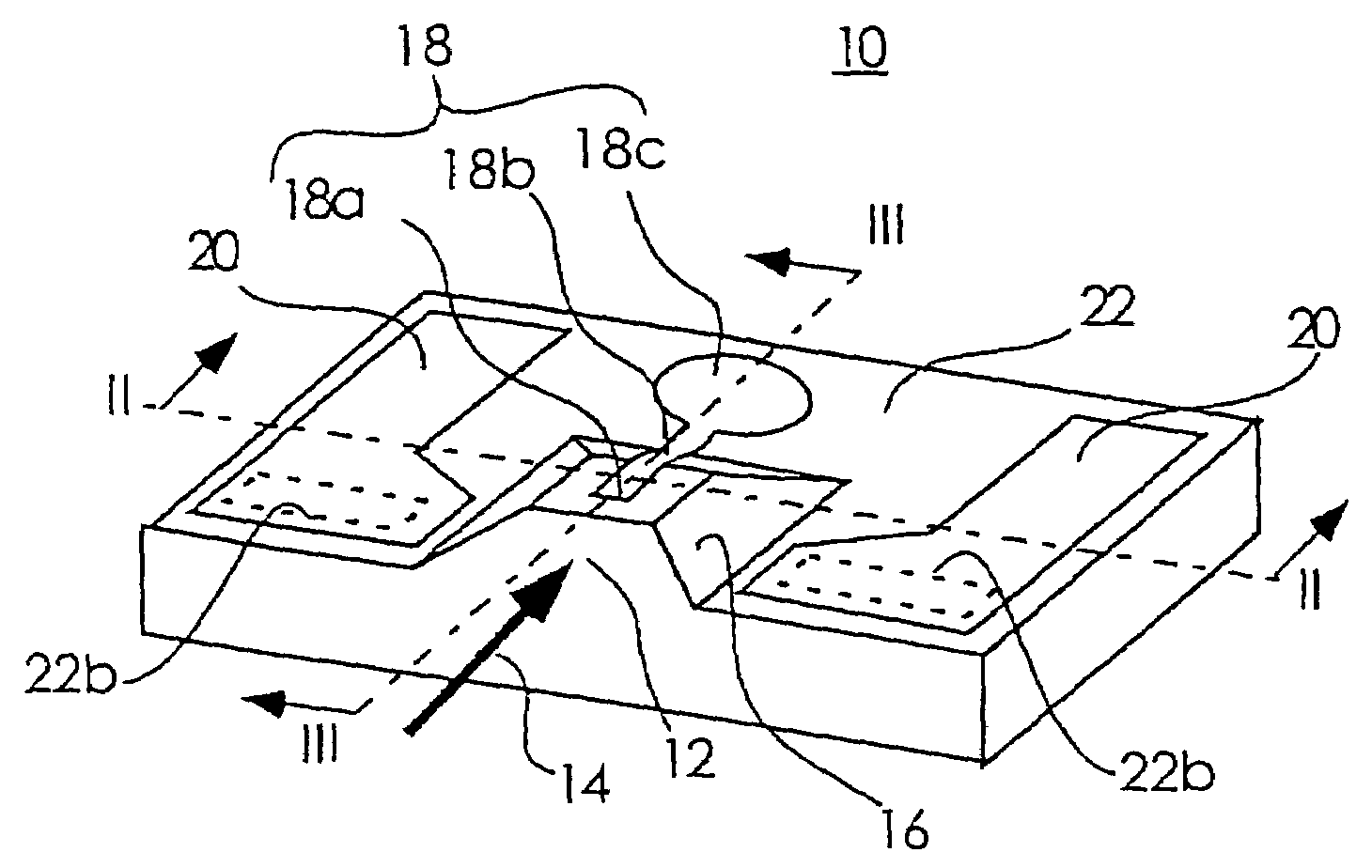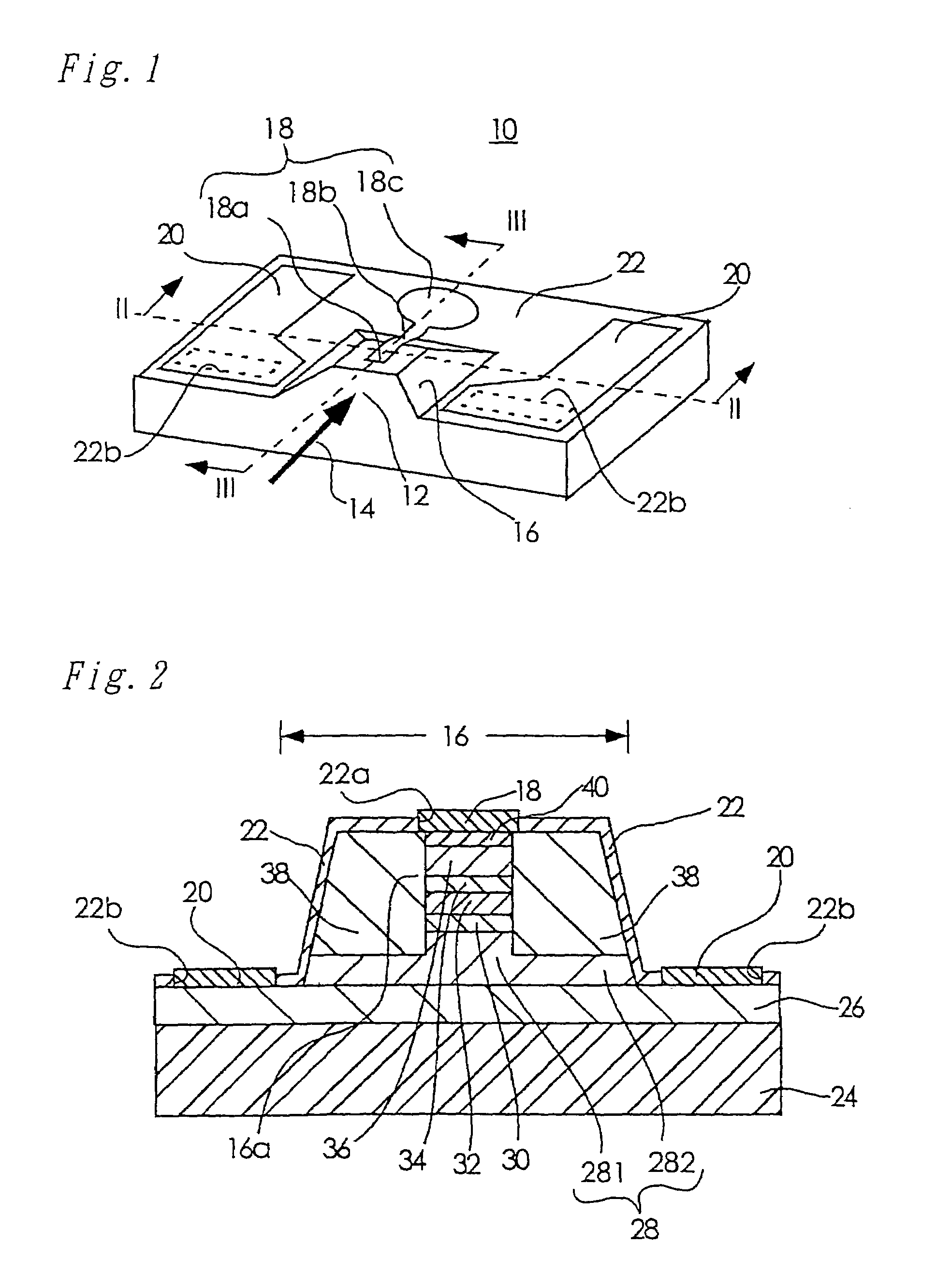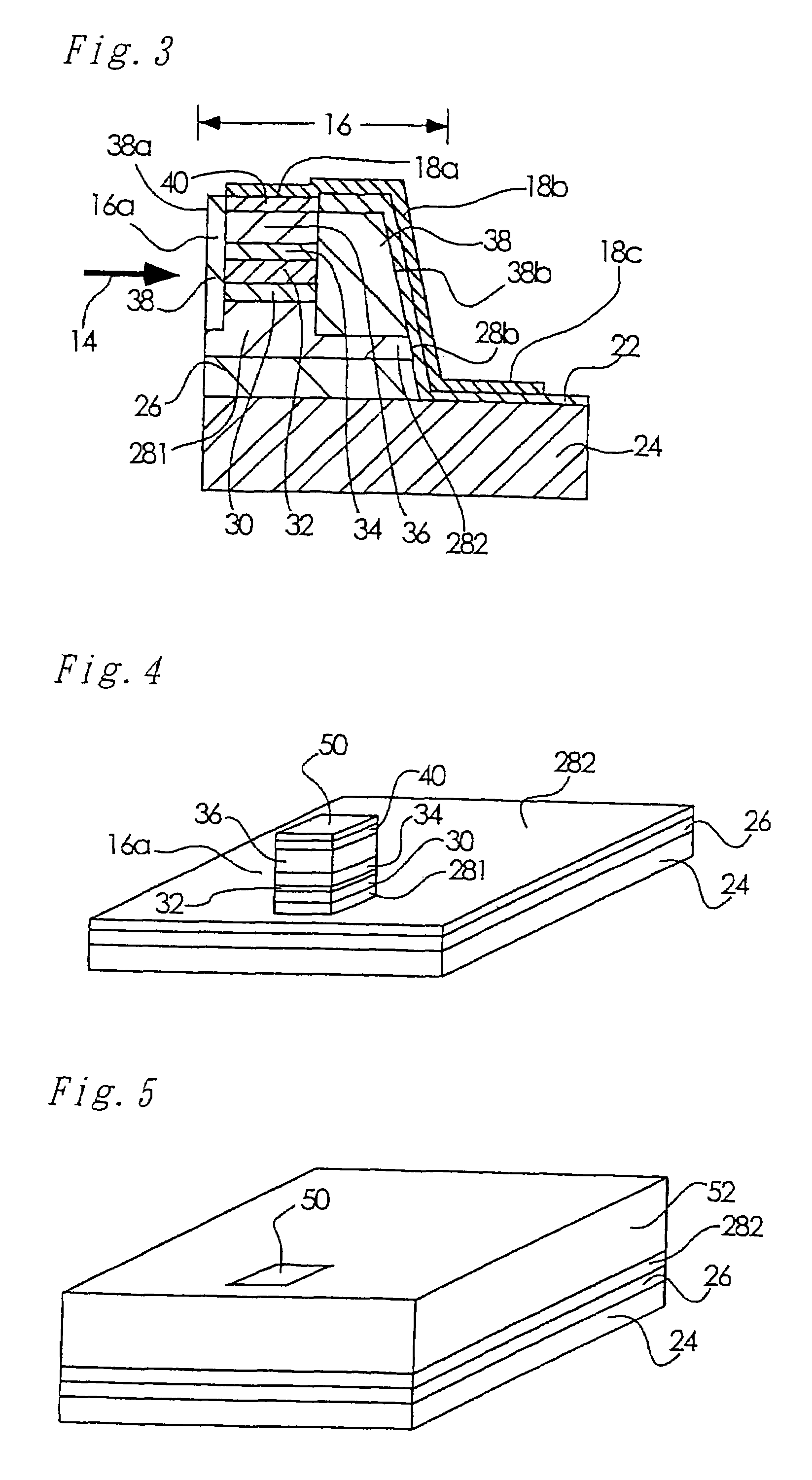Semiconductor photoreceptor device
a semiconductor photoreceptor and photoreceptor technology, applied in the field of semiconductor photoreceptor devices, can solve the problems of unfavorable eye pattern, unfavorable eye pattern, and the deformation of the high-frequency response of the semiconductor photoreceptor devices with increasing the electrode pad area, and achieves good high frequency characteristics, simple configuration, and high yield
- Summary
- Abstract
- Description
- Claims
- Application Information
AI Technical Summary
Benefits of technology
Problems solved by technology
Method used
Image
Examples
first embodiment
[0035]FIG. 1 is a perspective view of a semiconductor photoreceptor device according to a first embodiment of the present invention. FIG. 2 is a cross-sectional view of the semiconductor photoreceptor device shown in FIG. 1 taken along line II-II, while FIG. 3 is a cross-sectional view of the same semiconductor photoreceptor device taken along line III-III. It should be noted that like numerals will be used to denote the same or corresponding components.
[0036]Referring to FIG. 1, a light receiving portion 12 in the front of this buried waveguide type PIN-PD 10 receives signal light 14 indicated by the arrow. A waveguide mesa 16 is formed such that it projects from the top surface of the PIN-PD 10. The waveguide mesa 16 includes a waveguide 16a to which the signal light is introduced through the light receiving portion 12, as shown in FIGS. 2 and 3. A p-electrode 18 (acting as a second electrode) is disposed along the top surface of the waveguide mesa 16 such that the p-electrode 18 ...
second embodiment
[0092]FIG. 11 is a perspective view of a semiconductor photoreceptor device according to a second embodiment of the present invention. FIG. 12 is a cross-sectional view of the semiconductor photoreceptor device shown in FIG. 11 taken along line XII-XII, while FIG. 13 is a cross-sectional view of the same semiconductor photoreceptor device taken along line XIII-XIII.
[0093]Referring to FIG. 11, a light receiving portion 12 in the front of this buried waveguide type PIN-PD 60 receives signal light 14 indicated by the arrow. On the top side of the PIN-PD 60 are disposed a waveguide 16a and a blocking layer 38 surrounding the waveguide 16a, as shown in FIGS. 12 and 13. The waveguide 16a receives the signal light through the light receiving portion 12. On both sides of the waveguide 16a are formed openings 62 that go through the blocking layer 38 and an n-cladding layer 28 to the surface of an n-contact layer 26, thus forming a waveguide mesa 16 which includes the waveguide 16a.
[0094]Eac...
PUM
 Login to View More
Login to View More Abstract
Description
Claims
Application Information
 Login to View More
Login to View More - R&D
- Intellectual Property
- Life Sciences
- Materials
- Tech Scout
- Unparalleled Data Quality
- Higher Quality Content
- 60% Fewer Hallucinations
Browse by: Latest US Patents, China's latest patents, Technical Efficacy Thesaurus, Application Domain, Technology Topic, Popular Technical Reports.
© 2025 PatSnap. All rights reserved.Legal|Privacy policy|Modern Slavery Act Transparency Statement|Sitemap|About US| Contact US: help@patsnap.com



